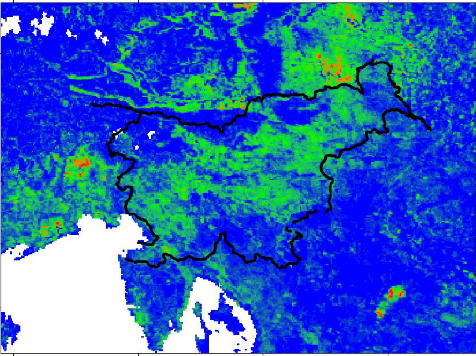Monitoring Drought Conditions in Slovenia using satellite-derived vegetation indices
Gregor Gregoric presents satellite-derived vegetation indices for Slovenia.
Length: 39 minutes.
Various sources of vegetation indices data (EUMETSAT LSA SAF, Copernicus Land Monitoring Service and MODIS) are available for drought monitoring in Slovenia. Each source has its advantages and disadvantages; the EUMETSAT LSA SAF data is updated daily (it is based on 15 minutes measurements), however it has relative coarse ground resolution (approx. 5x5 km over Slovenia). On the other hand Copernicus Land Monitoring service uses data from low orbital satellites which allow finer ground resolution (500 m - 1 km), but data are refreshed only every 10 days (similar frequency is valid also for MODIS data).
Regarding indices, vegetation signal from Fraction of Vegetation Cover (FVC) and Leaf Area Index (LAI) have been found to be a very good indicators of vegetation condition. FAPAR based on LSA SAF data gave us less accurate information on vegetation status. Our main focus is devoted to selected location with relative homogeneous vegetation and intense agriculture. Interpretation of drought signals deduced from indices time series is done with help of the reference period data and drought is interpreted as departure of current condition from reference values. However, drought influence can be masked with signals of damaged vegetation due to severe weather, e.g., hail; therefore much more effort needs to be invested in analysis that a drought signal can be recognized and isolated.

